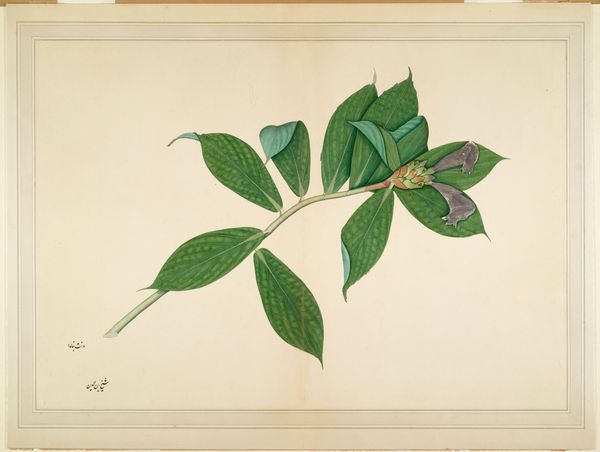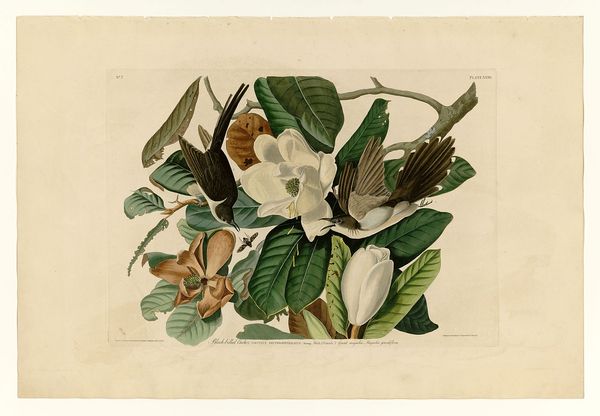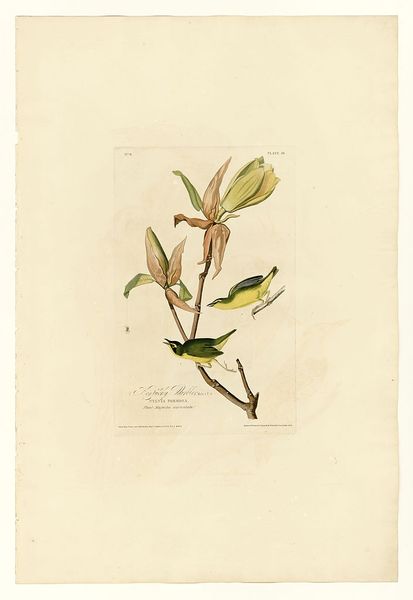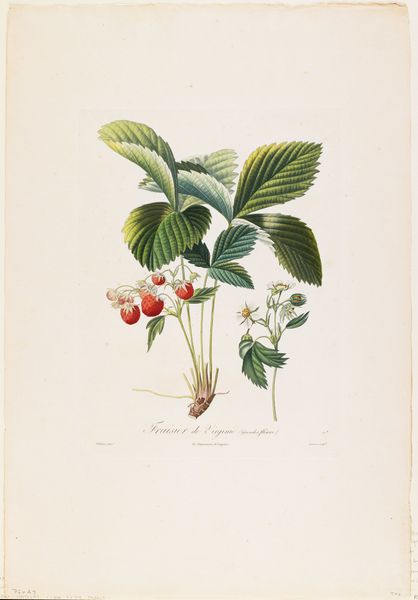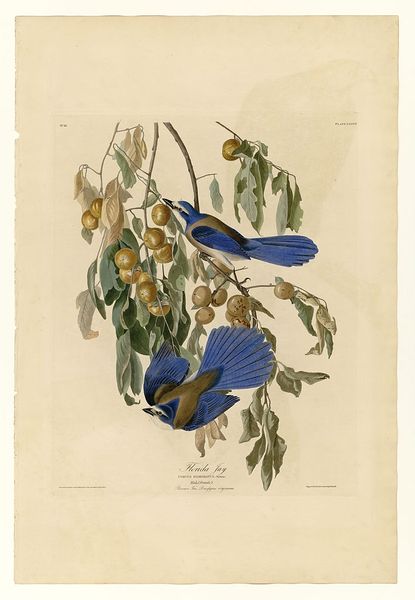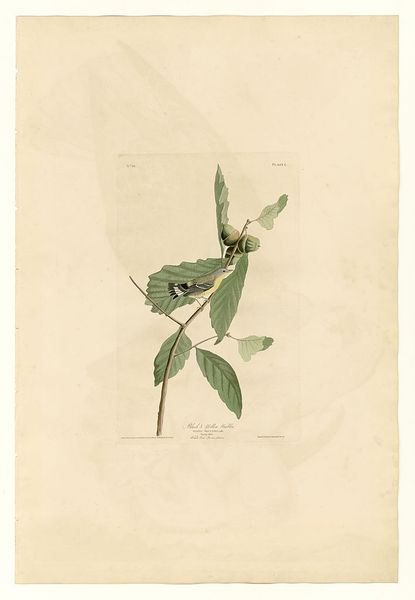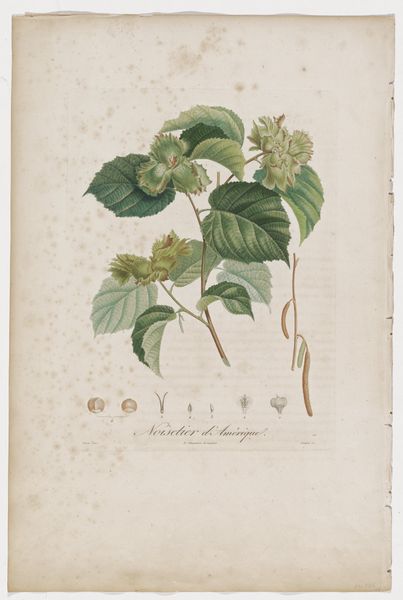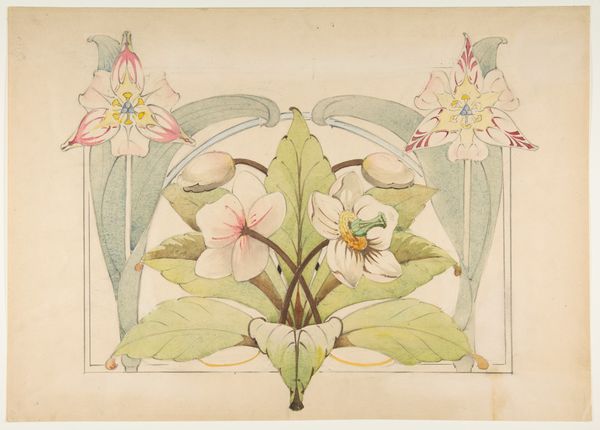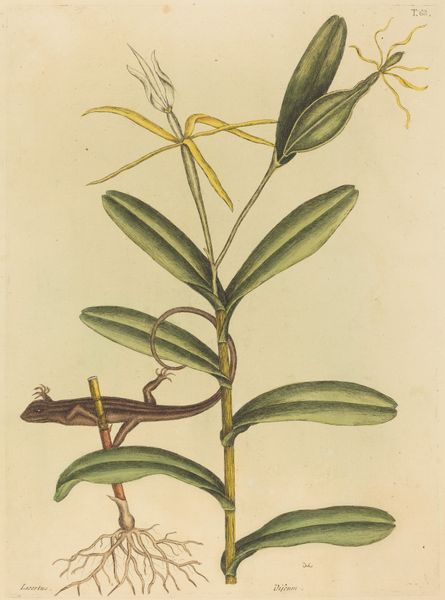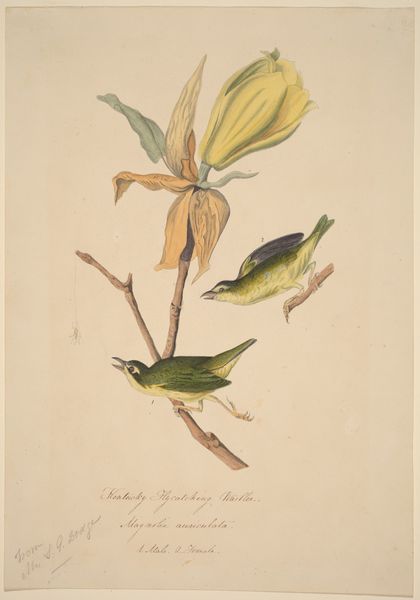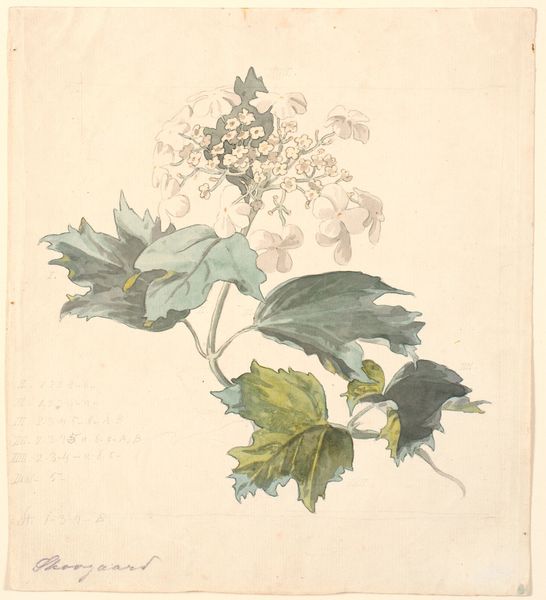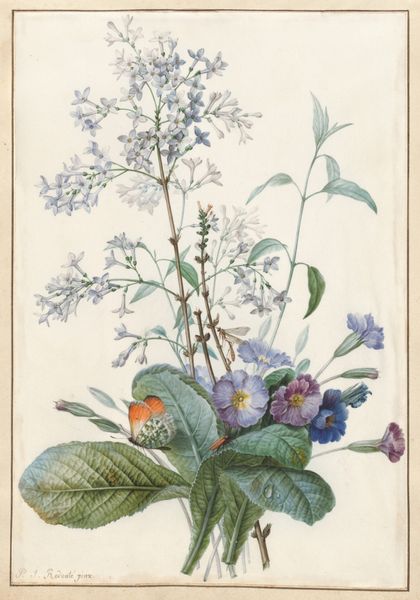
drawing, print, paper, watercolor
#
drawing
# print
#
paper
#
watercolor
#
england
#
romanticism
#
botanical drawing
#
watercolour illustration
#
botanical art
Dimensions: 15 3/4 × 16 3/4 in. (40.01 × 42.55 cm) (plate)23 3/4 × 29 3/4 × 1 1/8 in. (60.33 × 75.57 × 2.86 cm) (outer frame)
Copyright: Public Domain
Curator: Look at this exquisite watercolor and print titled "Hemerocallis caerulea (Common Hosta)" by Priscilla Susan Bury, created between 1831 and 1834. It’s just breathtaking. Editor: It certainly catches the eye, doesn’t it? Those colors, particularly the vibrant greens and delicate blues, practically leap off the page. But the flatness, or the attempt to reproduce something so inherently alive on mere paper, is odd, isn’t it? Curator: Precisely! The beauty lies in Bury’s masterful blend of scientific precision with Romantic sensibility. You feel transported, don’t you? It feels like an entire ecosystem in a single frame. The dragonfly… so ephemeral. Editor: Indeed. One can sense the economic considerations embedded here—paper itself, as a relatively affordable and reproducible surface for botanical illustration, granted access to those aspiring to align themselves with enlightened ideas about knowing nature. Were the costs defrayed through print sales, do we think? What might a working-class gardener have been able to learn about horticulture thanks to such pieces as this? Curator: An excellent question, highlighting how art intersects with societal structures. Notice, also, how the work's focus transcends mere replication; it evokes an emotional connection with nature. The slight imperfections – the insect nibbles on the leaves – lend it authenticity. It is alive. Editor: True, but those so-called “imperfections” can speak volumes about the material conditions that informed Bury’s work. Pests eating holes, for example, or, conversely, a deliberate choice of composition based on how readily reproducible some elements are compared to others? And beyond aesthetics, it reflects England's burgeoning industrial-scale cultivation of new botanical varieties, driven by its global imperial reach at this time. Curator: It is impossible to extricate art from its historical backdrop, yes, and England's role cannot be overlooked. Yet I contend that, while understanding such historical elements adds layers, it enriches the experience without eclipsing the artist's creative essence and intent to engage the senses, which remains paramount. Editor: A fair point, that one. But it is by looking at these things in combination – technique, intention, cultural-historical circumstances – that one comes to the work informed about so many interconnected processes. A good reminder not to take "beauty" at face value! Curator: Indeed! To delve beyond surface allure toward a richer, more nuanced appreciation—one where beauty meets awareness.
Comments
No comments
Be the first to comment and join the conversation on the ultimate creative platform.
